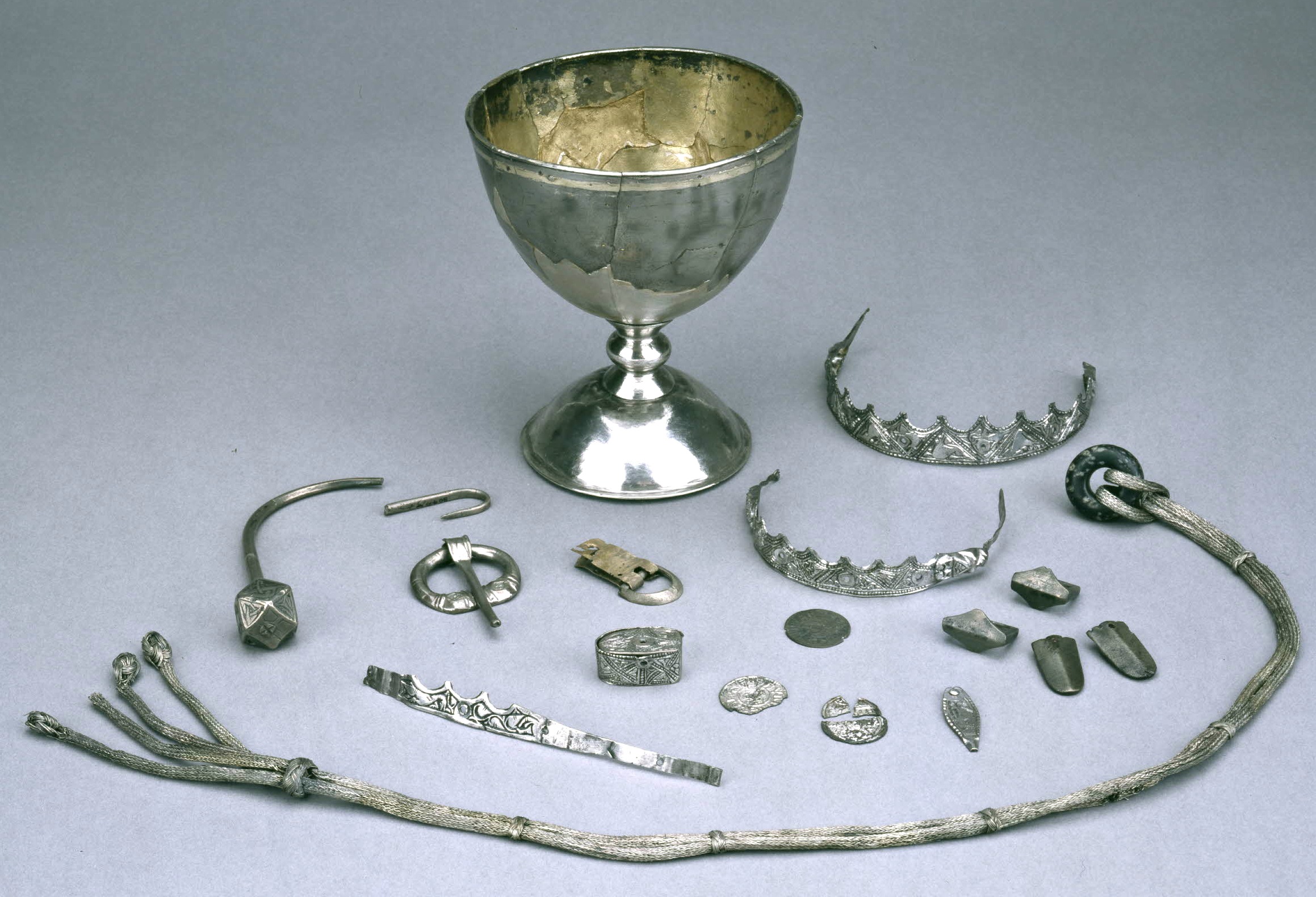Trewhiddle on:
[Wikipedia]
[Google]
[Amazon]
Trewhiddle is a small settlement in south

 On 8 November 1774, miners streaming for tin uncovered a hoard of 114
On 8 November 1774, miners streaming for tin uncovered a hoard of 114
Cornwall
Cornwall (; or ) is a Ceremonial counties of England, ceremonial county in South West England. It is also one of the Celtic nations and the homeland of the Cornish people. The county is bordered by the Atlantic Ocean to the north and west, ...
, England, United Kingdom. It lies in the civil parish
In England, a civil parish is a type of administrative parish used for local government. It is a territorial designation which is the lowest tier of local government. Civil parishes can trace their origin to the ancient system of parishes, w ...
of Pentewan Valley and the ecclesiastical parish
A parish is a territorial entity in many Christianity, Christian denominations, constituting a division within a diocese. A parish is under the pastoral care and clerical jurisdiction of a priest#Christianity, priest, often termed a parish pries ...
of St Austell. The nearest town is St Austell
Saint Austell (, ; ) is a town in Cornwall, England, United Kingdom, south of Bodmin and west of the border with Devon.
At the 2021 Census in the United Kingdom, census it had a population of 20,900.
History
St Austell was a village centred ...
, approximately one mile to the north.
The Trewhiddle Hoard (see below) has given its name to a Trewhiddle style of decoration in Anglo-Saxon art of the 9th century.
Manor of Trewhiddle
Trewhiddle was formerly referred to as a manorRashleigh, J. "An account of Anglo-Saxon coins and gold and silver ornaments found at Trewhiddle, near St Austell, AD 1774", ''Numismatic Chronicle'' 8: 137-157 (1868) which at one time contained two small settlements, Higher and Lower Trewhiddle. These settlements existed till at least 1891, but have since disappeared. The Trewhiddle area still includes two farms and Trewhiddle House.Archaeology
The Trewhiddle Hoard

 On 8 November 1774, miners streaming for tin uncovered a hoard of 114
On 8 November 1774, miners streaming for tin uncovered a hoard of 114 Anglo-Saxon
The Anglo-Saxons, in some contexts simply called Saxons or the English, were a Cultural identity, cultural group who spoke Old English and inhabited much of what is now England and south-eastern Scotland in the Early Middle Ages. They traced t ...
coins together with a silver chalice and other gold and silver objects. The coins, mostly from Mercia
Mercia (, was one of the principal kingdoms founded at the end of Sub-Roman Britain; the area was settled by Anglo-Saxons in an era called the Heptarchy. It was centred on the River Trent and its tributaries, in a region now known as the Midlan ...
and Wessex
The Kingdom of the West Saxons, also known as the Kingdom of Wessex, was an Anglo-Saxon Heptarchy, kingdom in the south of Great Britain, from around 519 until Alfred the Great declared himself as King of the Anglo-Saxons in 886.
The Anglo-Sa ...
, indicate that the hoard was hidden, possibly to protect it from Viking
Vikings were seafaring people originally from Scandinavia (present-day Denmark, Norway, and Sweden),
who from the late 8th to the late 11th centuries raided, pirated, traded, and settled throughout parts of Europe.Roesdahl, pp. 9� ...
raiders, in around 868. The artefacts were originally collected by Philip Rashleigh who published a subsequent account. Some were later dispersed, but most of the hoard was presented to the British Museum
The British Museum is a Museum, public museum dedicated to human history, art and culture located in the Bloomsbury area of London. Its permanent collection of eight million works is the largest in the world. It documents the story of human cu ...
. Many of the artefacts were decorated with stylized niello
Niello is a black mixture, usually of sulphur, copper, silver, and lead, used as an inlay on engraved or etched metal, especially silver. It is added as a powder or paste, then fired until it melts or at least softens, and flows or is push ...
animals, a feature of Anglo-Saxon art
Anglo-Saxon art covers art produced within the Anglo-Saxons, Anglo-Saxon period of English history, beginning with the Migration period art, Migration period style that the Anglo-Saxons brought with them from the continent in the 5th century, ...
which has since become known as Trewhiddle style decoration.
The Trewhiddle Ingot
Another remarkable discovery was made in 2003, when a 150-year-old lump oftungsten
Tungsten (also called wolfram) is a chemical element; it has symbol W and atomic number 74. It is a metal found naturally on Earth almost exclusively in compounds with other elements. It was identified as a distinct element in 1781 and first ...
was found at Trewhiddle Farm. This may predate the earliest known smelting of the metal (which requires extremely high temperatures) and has led to speculation that it may have been produced during a visit by Rudolf Erich Raspe to Happy-Union mine (at nearby Pentewan) in the late eighteenth century. Raspe, best known as the author or translator of the Baron Munchausen stories, was also a chemist with a particular interest in tungsten.
Trewhiddle House and estate
The legendary Cornish smuggler Cruel Coppinger may have been based on John Copinger, said to have purchased the Trewhiddle estate in the 1790s. In the 1840s, Trewhiddle House was home to the entomologist and botanist Francis Polkinghorne Pascoe. In the late twentieth century the house became a restaurant (the 'Trewhiddle Inn') and the estate a tourist campsite. Both house and estate have now been sold to developers and a number of 'New England–style' holiday villas have now been built. Little evidence remains of the former house other than a capped-off well and a small portion of the former walls which have been built into the landscaping.References
{{Cornwall, state=collapsed Manors in Cornwall Hamlets in Cornwall 1774 archaeological discoveries 2003 archaeological discoveries